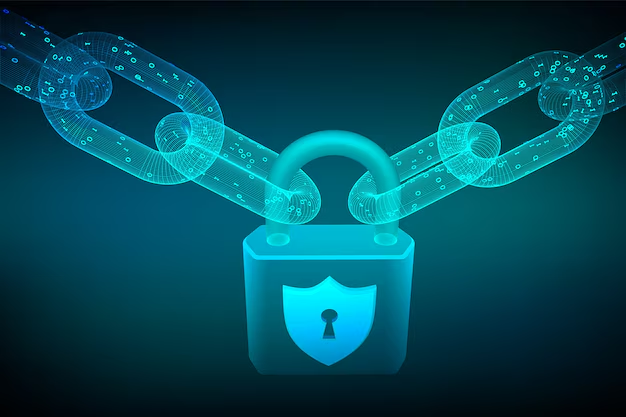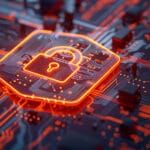As wireless communication networks continue to evolve, security remains a critical concern. Traditional encryption methods, while effective today, face a looming threat from the rise of quantum computing. Once sufficiently advanced, quantum computers could break widely used cryptographic algorithms, exposing sensitive data to unprecedented risks. This potential vulnerability has driven researchers to explore quantum communication as a revolutionary solution for securing wireless networks.
Quantum communication leverages the principles of quantum mechanics—such as superposition and entanglement—to create ultra-secure communication channels that are theoretically immune to hacking. By integrating quantum cryptographic techniques like Quantum Key Distribution (QKD) into wireless networks, organizations can achieve unbreakable encryption and enhanced data protection. This emerging field marks the beginning of a new era in wireless security, promising resilience against cyber threats in an increasingly connected digital world.

Quantum Cryptography and Secure Communication
As quantum computers advance, traditional cryptographic methods such as RSA and ECC (Elliptic Curve Cryptography) face the risk of becoming obsolete. Quantum cryptography provides a fundamentally new approach to secure communication by leveraging the laws of quantum mechanics. Unlike conventional encryption, which relies on complex mathematical problems, quantum cryptography ensures security through the inherent properties of quantum particles.

Quantum Key Distribution (QKD): Unbreakable Encryption
One of the most significant applications of quantum cryptography is Quantum Key Distribution (QKD), which enables two parties to securely exchange encryption keys. The security of QKD is based on the quantum no-cloning theorem, which states that an unknown quantum state cannot be copied without altering its original state. This means that any eavesdropping attempt will disturb the quantum system, alerting the communicating parties to a potential attack.
How QKD Works:
- A sender (Alice) transmits quantum-encoded bits (qubits) to a receiver (Bob) using photons.
- Bob measures the received photons using a randomly chosen basis.
- Alice and Bob compare their measurement results over a public channel to establish a shared secret key.
- Any eavesdropping attempt will introduce anomalies in the transmission, allowing Alice and Bob to detect security breaches.
QKD protocols such as BB84 and E91 have been successfully implemented in real-world applications, providing secure communication channels for governments, financial institutions, and defense organizations.
Post-Quantum Cryptography (PQC): Future-Proof Encryption
While QKD offers a secure method for key exchange, existing encryption algorithms still need to be updated to withstand quantum attacks. Post-quantum cryptography (PQC) refers to the development of cryptographic algorithms that remain secure even against quantum computers. These algorithms are designed to replace traditional public-key cryptosystems and ensure long-term data security.
Some promising PQC approaches include:
- Lattice-based cryptography: Resists quantum attacks by relying on the difficulty of solving lattice problems.
- Code-based cryptography: Uses error-correcting codes for secure encryption.
- Multivariate polynomial cryptography: Based on solving complex polynomial equations.
Organizations such as the National Institute of Standards and Technology (NIST) are actively working on standardizing PQC algorithms to ensure a smooth transition to quantum-safe encryption.
Role of Quantum Cryptography in Preventing Cyber Threats
Quantum cryptography strengthens security in wireless networks by:
- Preventing eavesdropping: QKD ensures that any interception attempt is immediately detectable.
- Securing financial transactions: Banks and financial institutions can use quantum cryptographic methods to protect sensitive data.
- Protecting government and military communication: Defense organizations can leverage quantum encryption to safeguard classified information.
- Enhancing IoT and cloud security: Quantum-safe encryption ensures that connected devices and cloud-based services remain secure in the post-quantum era.

Integration of Quantum Communication in Wireless Networks
The rapid evolution of wireless communication, from 4G and 5G to the upcoming 6G networks, demands highly secure data transmission methods. However, conventional encryption techniques face a significant challenge with the rise of quantum computing, which could break existing security protocols. Integrating quantum communication into wireless networks offers a groundbreaking solution by leveraging the principles of quantum mechanics to achieve unbreakable encryption and secure key distribution.
Enhancing Wireless Security with Quantum-Safe Encryption
Wireless networks are particularly vulnerable to cyber threats due to their open nature. Quantum Key Distribution (QKD) provides an added layer of security by enabling unbreakable encryption for data exchange in wireless communication. When integrated into 5G, 6G, and Wi-Fi networks, QKD ensures that encryption keys cannot be intercepted or duplicated without detection, making wireless communication more secure than ever.
How QKD benefits wireless security:
- Eliminates eavesdropping risks by ensuring that any interception attempt alters the quantum state and is immediately detectable.
- Prevents man-in-the-middle attacks by securing authentication mechanisms in wireless protocols.
- Future-proofs encryption against quantum computing threats, ensuring long-term data protection.
Quantum-Secured 5G and 6G Networks
With the rollout of 5G and research into 6G networks, quantum-secured communication is gaining traction. Wireless infrastructure providers and telecom companies are exploring ways to integrate quantum cryptographic techniques to protect sensitive data transmission in next-generation networks.
Key areas of integration:
- Quantum-safe encryption for IoT devices to prevent security breaches in connected smart devices.
- Ultra-secure backhaul communication for telecom networks, ensuring that core infrastructure remains protected.
- End-to-end encryption for mobile communication using QKD to protect user data in transit.
Challenges in Implementing Quantum Communication in Wireless Networks
Despite its potential, integrating quantum communication into wireless networks presents several challenges:
- Scalability and Infrastructure Limitations
- Current QKD implementations rely on fiber-optic cables, making deployment in wireless environments complex.
- Quantum repeaters are required to extend the range of quantum communication, but they are still in the experimental stage.
- High Implementation Costs
- Quantum technology is still expensive, requiring specialized hardware such as single-photon sources and detectors.
- Deploying quantum-secure infrastructure across global wireless networks requires significant investment.
- Interference and Signal Loss
- Wireless networks operate in environments with high noise and interference, which can affect the stability of quantum signals.
- Free-space quantum communication methods, such as satellite-based QKD, are being explored to overcome these challenges.
The Role of Satellite-Based Quantum Communication
To bridge the gap between fiber-based QKD and wireless networks, researchers are developing satellite-based quantum communication systems. These satellites can transmit quantum-encrypted data across large distances, enabling secure wireless communication globally.
Key benefits of satellite-based QKD:
- Overcomes distance limitations of fiber-optic-based quantum communication.
- Enables secure wireless communication for remote areas and global networks.
- Supports military and government applications where high-security communication is critical.
China’s Micius satellite and the European Union’s Quantum Internet initiative are examples of ongoing efforts to establish quantum-secured global communication networks.
Key Applications and Use Cases
Quantum communication is poised to revolutionize cybersecurity in wireless networks, offering unbreakable encryption and secure data transmission. As industries increasingly rely on wireless communication, integrating quantum-secured solutions is becoming essential. Below are some of the key applications and use cases of quantum communication in wireless networks.
Secure Military and Government Communications
Governments and defense organizations handle highly sensitive data that require top-tier security. Traditional encryption methods are vulnerable to cyber threats, but Quantum Key Distribution (QKD) provides an unbreakable security layer.
Use Cases:
- Secure military communications and intelligence sharing over wireless networks.
- Encrypted satellite communications for global security operations.
- Quantum-safe authentication for classified government documents and diplomatic messages.
Example: China’s Micius satellite has demonstrated quantum-secured communication between continents, highlighting the potential of quantum encryption for global defense applications.
Financial Transactions and Quantum-Safe Banking Networks
With cyber threats increasing in the financial sector, banks and financial institutions are exploring quantum encryption to protect transactions and customer data. Post-quantum cryptography ensures that financial systems remain secure even in the era of quantum computing.
Use Cases:
- Quantum-encrypted financial transactions to prevent hacking and fraud.
- Secure online banking and mobile payments using QKD-based encryption.
- Post-quantum cryptographic algorithms for long-term financial security.
Example: The Bank of Austria has successfully tested QKD for secure interbank communication, demonstrating how quantum cryptography can protect financial data.
Healthcare Data Protection in Wireless Medical Networks
The healthcare industry relies on wireless networks to transmit patient records, medical imaging, and real-time health monitoring data. Protecting this information from cyberattacks is crucial for compliance and patient safety.
Use Cases:
- Quantum-encrypted patient records to prevent data breaches.
- Secure wireless transmission of medical imaging and diagnostics.
- Safe telemedicine communication channels for remote consultations.
Example: Quantum cryptography is being explored in electronic health record (EHR) systems to ensure patient data privacy under strict regulatory standards like HIPAA and GDPR.
Secure IoT and Smart City Applications
The rise of Internet of Things (IoT) devices in smart cities introduces cybersecurity risks due to the vast number of connected endpoints. Quantum-secured encryption ensures that IoT networks remain resilient against cyber threats.
Use Cases:
- Quantum-secure IoT devices for smart homes, autonomous vehicles, and industrial automation.
- Protecting smart city infrastructure such as traffic control, surveillance, and power grids.
- Preventing cyberattacks on critical utilities like water supply and public safety systems.
Example: Research in quantum cryptographic IoT protocols aims to make wireless sensors and smart city devices quantum-safe, ensuring long-term security.
Aerospace and Satellite Communication Security
With increasing reliance on satellite-based communication, ensuring secure data transmission is critical for global defense, navigation, and remote communication.
Use Cases:
- Quantum-secure satellite links for global data transmission.
- Encrypted GPS and navigation systems for aviation and space exploration.
- Secure deep-space communication for interplanetary missions.
Example: The European Quantum Communication Infrastructure (EuroQCI) project aims to integrate QKD into satellites to enable quantum-secured global communication.
Enterprise Cybersecurity and Cloud Protection
Businesses are shifting to cloud-based systems, increasing the risk of cyberattacks. Quantum communication strengthens enterprise cybersecurity by protecting cloud storage, data centers, and remote access networks.
Use Cases:
- Quantum-encrypted cloud storage for enterprise and personal data.
- Securing corporate wireless networks from cyber espionage.
- Quantum authentication mechanisms for employees and remote work environments.
Example: Tech giants like Google and IBM are actively researching post-quantum cryptography solutions to integrate into cloud security frameworks.

Conclusion
Quantum communication is ushering in a new era of security for wireless networks, offering unbreakable encryption and future-proof data protection. By leveraging the principles of quantum mechanics, technologies such as Quantum Key Distribution (QKD) and post-quantum cryptography provide robust solutions against evolving cyber threats. As industries increasingly rely on wireless communication for critical applications—ranging from military defense and financial transactions to healthcare and IoT security—quantum encryption ensures that sensitive data remains protected even in the face of quantum computing advancements.
While challenges such as scalability, infrastructure costs, and signal interference remain, ongoing research and developments in satellite-based QKD, quantum-safe cryptographic protocols, and next-generation wireless networks are paving the way for global adoption. As quantum technologies continue to mature, integrating them into wireless communication systems will be essential for ensuring a secure, resilient, and future-ready digital ecosystem.












